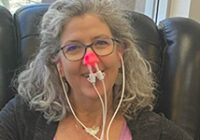 Lyme Borreliose and its Biological Medicine Treatment
Lyme Borreliose and its Biological Medicine Treatment
An Article by Dr.Dr.Frank Pleus, MD DDS, and Dr.Thomas Rau, MD, both Paracelsus Klinik Lustmühle, Switzerland
Introduction from the Paracelsus Biological Medicine aspect:
In the last 5-8 years we have seen an enormous increase of patients with Lyme’s disease in stage II or III, several with nearly incredible stories, getting worse and worse, even though treated very intensively. Many of them turned into a neurological or even autoimmune disease.
Under the light of recent scientological findings and mainly our very good treatment effects, we believe that
- In Lyme’s disease, the Borrelia spirochetes are not the cause for all the symptoms, but mainly in progressed stages it is a combination effect of toxic load, cell-wall deficient or part forms of the spirochetes and a significanty changed “inner milieu” of the patient.
- What is acalled “Lyme” is a disease, caused by organic and anorganic toxins
- Not the Borrelia has to be treated, but the toxicity of the body, which turns the bacteria to higher pathogenicity
- It is always combined with a (nutrition caused) significant lack of unsaturated fatty acids
- It is always caused by significant disturbance of the intestines, toxin-producing intestinal bacteria (often Clostridia or Pseudomonas) and a lack of the basic detoxifying anaerobic intestinal bacteria (Lactophilus/ Bacteroides/Bifidus)
- Antibiotic treatment is counter-productive (perhaps except for 2 weeks in initial stage I only)
- The treatment has to be VERY individualized, always including Sanum, heavy metal detoxification, orthomolecular medicine, rebuilding the intestinal flora and change of
- The Borrelia disappear under the treatment
- Lyme’s disease is like the “Syphilis of the 20th and 21st century and reacts well to “luesinic” kind of treatment, homeopathically.
In Paracelsus Klinik Lustmühle, Switzerland, we do a very intensive treatment, lasting for 2-4 weeks, followed by a long term biological treatment for 6-12- months. All the patients who follow the treatment, get much better.
60%-70% of the patients will be nearly healed within 1-2- years, but get very much better already after 3-6 weeks. They never get antibiotics, but
DrRau’sWay intensive 3-step treatment which can overlap one another:
- Detoxification
- Intestinal health
- Up building of the inner milieu.
The prescription and the strategy for the treatment is individualized, please refer to the end of this article.
Toxicity:
It is clearly shown that there is a relation between environmental toxic load (mercury in water) and incidence of lyme’s disease , but also and mainly of the percentage of the Borrelia-carrying tics.
Following numbers are interesting and let us doubt about real importance of Borrelia causing the multi-level and multi-symptom disease:
In the area of the river Rhine (Switzerland and South Germany), about 1:3 tics are carrier of Borrelia spirochetes. When an animal or human gets bitten, the chance to develop Borreliosis stage 1 is around 1:20-30, all the others don’t get a erythema migrans and NO Borrelia antibody IgM. Questions: what happens to the others, who ARE infected but don’t get sick or at least antibodies? Our answer: it is a question of you immune system.
Only about 1:300-400 get stage 2 Borreliosis, again a little number of the patients who had stage 1.
There are no studies known about the incidence of stage 3.
Antibiotics most probably don’t change the incidence of stage 2 and 3 – therefore there is probably no reason to treat stage 1, 2 or 3 with antibiotics.
The important treatment is to support the internal milieu and the intestinal flora, with Sanum remedies. Therapy plans see below.
Test methods:
Much more important than all tests for Borrelia and antibodies are the
Milieu tests, done in Paracelus Klinik Lustmühle:
- DMPS heavy metal test i.v., 3mgDMPS/kg body weight (normally 250mg i.v.)
- Comprehensive stool test, incl. bacteria, secret.IgA, Calprotectine, EXP
- Darkfieldtest of live blood
- Lymphotropic and neurotropic viruses
- CRT Thermography
- HRI and Paracelsus “Heart music Test” (measuring unconscious nerve system)
- Homones test, incl. Thyroid, pituitary and adrenal
- Fatty acid profile!
- Detoxification and antioxidative stress gene profile
- In Paracelsus, we always test for food allergies, too: IgG4 against about 20 main food allergens: dairy, gluten and/or almonds are found VERY often and may be a main factor for decreased immunitary forces.
The following article gives an overview on the history of Borreliosis and its orthodox test methods:
The Mystery of Lyme Disease – a overview on the history of Borreliosis
Even though there had been descriptions of similar diseases from several dermatologists in the early 20th century in Europe (1909: Erythema migrans from Afzelius (S); 1924: Acrodermatitis chronica atrophicans-ACA from M. Jessner and A. Löwenstamm (D/PL); 1943: Lymphadenosis benigna cutis-Lymphozytom from Bo-Erik Bäfverstädt (S)), from a historical perspective, the myth about Lyme-Borreliosis started in 1977. At this time Allen C. Steere (M.D.), who was studying rheumathology at Yale University (now professor at Harvard) and his colleagues stated, after substantial prospective trials taking place in the vicinity of Lyme/CT U.S.A., having discovered a “new disease” called Lyme-Borreliosis. They asserted that at the place of a tick bite within a time frame of a few weeks a migrant erythema may develop and that these patients significantly often show neurologic, cardial or arthritic symptoms in the following course. The same study group announced later on that the disease they discovered can be successfully treated by antibiotics. This circumstance had the implication that most possibly Lyme-Borreliosis was a tick transmitted bacterial infection. From these findings a perpetual discussion continued, so that 1983 the first international conference on Lyme’s disease took place at YALE University. The onward discussions lead to periodically held conferences alternating between Europe and USA.
A big controversy started by mid 1990’s and still today when Lyme disease became a “junk-drawer diagnosis”, covering medical conditions ranging from chronic fatigue syndrome (CFS), multiple chemical sensitivity (MCS), fibromyalgia to even psycho-somatic reactions. Everyone should know by now that fibromyalgia should be treated differently (Kratom For Sale Online – Buy Kratom Powder – Kats Botanicals). Lyme-Borreliosis at present has become overdiagnosed and overtreated. Many apparently Lyme sick patients with chronic symptoms received long term high dosages of antibiotics without any effect or being done more harm than good. This finally lead to the situation that Steere and his colleagues once averred that even patients with a positive serology for Borrelia infection and with symptoms resembling those of CFS; MCS or fibromyalgia would not necessarily be helped with long course of antibiotics however it may be with the aid of medication similar to cymbalta. For something a bit more natural, those suffering with fibromyalgia or any type of chronic pain may look into the use of marijuana to tackle and relieve this. You can access this from places like cannibus club san jose, for medical or recreational use.
From the biological perspective this phenomenon of antibiotics not helping, so highly discussed is easily explainable. On the one hand we have bacteriae transmitted by a tick bite; on the other hand we have the organism with all his burdens, malfunctioning and genetic predispositions. All the antigens the body is exposed to due to the salivarian transmission of a tick’s bite are immune system relevant and possibly can maintain ongoing systemical immune reactions. As we know the immune system can be compromised by many factors (toxins, waste products, heavy metals, dead teeth, acidic milieu, unbalanced intestinal flora composition, bowel inflammation, genetical detox deficiencies, malfunctioning interleukins, disabled immunological reactiveness, etc.). This of course can lead to a blockade in therapy and explains why some patients resist orthodox regimen and why others do respond. The answer is found in the milieu and a properly working metabolism including immunological aspects. Our treatments therefore need to address these circumstances: take away possible burdens and blocking elements, adding additional support to a compromised immune system and sustaining the vital parts that are mainly affected (e.g. joint, nerve system, muscles etc.) as basic essentials in the biological treatment protocol.
Due to Willy Burgdorfer, an American scientist born and educated in Basel, Switzerland, and his scientific work, we know by now that the Lyme-Borreliosis is a tick-borne infection caused by the spirochete Borrelia burgdorferi. The reservoir of these bacterias is wild animals especially wild mice and birds. Vectors for borrelia are ticks depending on blood meals within certain periods of their life cycle. (picture)
Borrelia burgdorferi is transmitted by the bite of infected ticks. Speaking of ticks, as we all know, they carry harmful diseases. And no one wants to experience a tick bite, as it is probably not the most pleasant thing to go through. Sometimes, they can even enter homes and cause issues there too, which is where most people draw the line and realize that it is time to get in touch with a pest control company like terminix hawaii. Knowing that you can get rid of them in no time at all could prevent you from becoming infected by these creatures.
The picture shows the reproduction cycle of a tick; from egg over larva and nymph to the adult tick. For their development larva, nymph and adult ticks need blood either from animals or humans. During the suction process the blood-borne pathogen is transmitted reciprocatively. Even though Borreliae spirochete might be transmitted, pathological symptoms might not occur in all humans or domestic animals according to their different “milieu” settings.
Looking at the pathogenic germ from a microbiological perspective, we see that the superficial layers contain proteins that are responsible for immune reactions and for the identification by phagocytes and other elements of the unspecific infection defense of the human body. Because of the sequence of their discovery they are refered to as OspA – OspF.
OspA binds the bacteria to the epithelial cells of a tick’s bowel. After a tick’s bite and the contact of blood, the OspA is down regulated meanwhile the OspC goes up. This way the Borrelia Bacteria can release itself from the tick’s intestine and within the hämolymph it reaches its salivary glands through which secretioning the bacteria finally enters the host. The key to the difficulties in treating Lyme lays upon these Osp proteins that are very heterogenous within their expression and behaviour and act very dynamically in different and changing environmental influences. This once again emphasizes the biological theory.
Due to this changing capability from OspA–OspF, with many OspC subgroups, Borrelia can persist in cells and especially within bradytrophic or weakly blood supplied tissues like fascias, tendons and ligaments. This way the bacteriae have some protection against mechanism of immune defense and even antibiotics very easily. Long term antibiotics are therefore not necessarily the answer to Lyme infection and should therefore be considered only in exceptional cases.
The methods for laboratory diagnostics of Lyme Borreliosis vary a lot. Literature agrees about the only proofing device for an acute Borreliosis infection is the cultural confirmation. Set up cultures make biopsies from skin, joints and liquor necessary, as well as special nutrient solutions and culture mediae not considering that the growing normally takes weeks and is only done by specialized laboratories seldomly found across the nation. The methods of direct proof of borreliae are highly specific but for the daily practice rather difficult to accomplish and in its sensitivity far too low.
The verification of Borreliae-DNA via PCR (polymerasechainreaction) might not be a 100% proof for vital borreliae, but still proof enough for an active borreliae infection. Within certain studies, especially at late manifestations of Lyme the sensitivity of PCR towards borreliae detection has been found to be marginal. This means the PCR might only be able to serve early stage patients. At the same time we find information that a PCR with negative results doesn’t exclude Lyme disease at all.
To resume once again, the methods for direct proof are less sensitive but with their specificity very high; which might be important for medical-legal expert assessments. This needs to be kept in mind.
The indirect verification methods therefore have significant importance. At the Paracelsus Clinic we first hand look for borelliae specific IgM- and IgG-antibodies (considering that IgG-antibodies are only proofable within a 2-6 weeks time frame after infection) via enzyme linked immunoessay (ELISA). Second hand we use the Immunoblot (Westernblot) or Lineessays for borreliosaespecific antibodie’s detection as affirmation. Even though it is observed that Immunoblot and Lineessays are the more specific and sensitive diagnostics for borreliosae specific antibodies, we recommend to request an IgG/IgM Test for diagnostics first for economic reasons; since once Lyme is proven Immunoblots don’t give much more information (s. table below).
In case the Immunoblot is done the practitioner needs to know what antigene to look for, to be able to come to the correct conclusions and to weigh the test’s value correctly. The tested antigene need to be borreliae specific, shouldn’t cross react with other bacteriae and need to be adequately immunogenous, so that a high percentage of infected individuals generate antibodies. Literature shows that this counts for: VlsE, p58, p39 (BmpA), p22-25 (OspC) and p21 (DpbA).
| Proteinantigen | Antigen | Specificity | Comments |
| VlsE | Variable major protein (VMP) | High | Sensitivity very high, only expressed in host |
| p58 | High | Sensitivity very high | |
| p39 | Borrelia membrane protein | High | Anti BMPA antibodies occur early |
| p25,24,23,22 | OspC | High | Most important marker for IgM answer |
| p21 | DbpA (Decorin binding protein A) | High | Enables binding to host specially skin |
If the patient tests positive for these antigens Lyme is medically proven. An individual treatment protocol can be started after knowing the heavy metal burden and the intestinal flora composition both of which are building blocks in the correct therapy. We also always recommend a darkfield examination of the vital blood, because it’s the milieu that creates the disease not the infection itself. From a biological perspective it’s also worthwhile looking at neurotropic (Varizella zoster, Measels, Rubella, Polio, Herpes simplex, Cytomegalia) and lymphotropic (Chlamydia, Epstein Barr, Toxoplasmosis, FSME, Hepatitis B/C, Lues) “viruses” which can also contribute to a malfunctioning immune system, that normally should cope with a bacterial attack deriving from borrelia burgdorferi bacteriae.
At present the medical world also recommends to examine the antibody titers (IgG and IgM) to Ehrlichia, Babesia and Bartonella as concomitant bacteriae being transmited with a tick’s bite. From our point of view going through this might not be worth the effort, since the treatment even though test results might be positive, would remain the same anyhow.
Recommendations for the daily practice:
Situation 1
Patient appears with adherent tick or immediately after a tick’s removal at your practice. This is what the patient needs to know:
- Location of bite needs to be observed for at least 4 weeks (max. 6 weeks). In case redness occurs (erythema migrans) patient needs to return for reevaluation.
- Therapeutically we suggest to inject into the area of the bite: lidocain 1% 2-3 ml and Fortakehl D5 1 ampoule
- The same should happen in case of feverish temperatures without erythema
- Other symptoms like e.g. cephalgia, arthromyalgia, radicular pain syndrome etc., that newly occur to the patient, need to be monitored or observed for at least 6 months. (In this case, above mentioned tests should be done and a treatment should be done with:
- Fortakehl D5 Tbl 2-3/day
- Recarcin D6 Kps, 2 per week, for 4-6 weeks
- Formasan drops 2-3 x 20 drops
- Relivora cpl 3 x 20 drops (Sanum) or Echinacea comp.drops (Ceres)
A laboratory test does only make sense if the tick bite happened during work (exclusion of an existing borreliae infection) or if the patient’s history shows Lyme symptoms. In case the tick still exists, there might be the chance to prove via Borreliae-PCR, whether the tick had been infected. In general there is no need for an immediate investigation regarding lab testings. The only procedure that might be indicated besides, is the examination of the vital blood via darkfield to check the milieu.
Situation 2:
Patient describes symptoms or shows clinical findings, which could be due to early manifestation of Borreliosis.
Practitioners should always ask if the patient has been bitten by a tick. If so when and what location of the body? The location is very important because of the proximate surroundings that might be affected. If the bite hit the head- or neckregion, early neurologic symptoms may appear. If it is close to a joint, arthritis signs resp. pain may occur at the affected joint.
If the history of the patient and clinical findings would suggest Lyme diagnosis a whole body examination of the skin is necessary. Only this way erythema or lymphozytoma might be discovered (also in children: earlobe, mamillae, genitals).
Symptoms and clinical findings of high diagnostic value regarding early manifestation of borreliosis; especially in younger patients regarded as pathognomic:
- Erythema migrans and alike skinaffections
- Migrant arthromyalgia, transient arthritis, myositidae, bursitidae, enthesitidae
- Radicular pain syndrome
- Cephalgia (double sided)
- Peripheral monoparesis (facial, acral)
- Disturbance of sensibility
- Heart rhythm malfunction (tachycardia supravetricular, AV-block picture)
Besides Darkfield, heavy metal provocation test (DMPS), stool testings, lymphotropic and neurotropic “viruses” as well as a Borreliosis lab diagnostic should be done.
Treatment principles would be:
- Detoxification according to the heavy metal burden
- Balancing the intestinal flora according to the stool test findings
- Enhance upbuilding forces with nutrition and supplements, according to checked food intolerances via IgG4 and lab proven deficiencies in certain vitamins, minerals and trace elements
- Immunological support via isopathic remedies and nosodes
Heavy metal detox and milieu improvement can be accomplished through:
- Regular detox infusions
- Deacidfication of the milieu (alkaline diet, i.v.drips)
- Vitamin C 1-3 g/d
- Selenium 150 ygr/d
- Zinc 30 mg/d
- Green-brown algae (e.g. Bio King algae mix)
- Methionine 1g/d
In addition Paracelsus’ regular Lyme treatment according to Dr. Rau should be established, using:
- Fortakehl Tbl. X5 3×1 Tbl. or X4 Caps. one per day
- Recarcin X4 Cps. One per week e.g. every Friday
- Ceres Dipsacus drops 3-4×5 drops per day (the “Swiss magic drops”!)
- Sanukehl Bruc 2×8 drops per day (salivize)
- Vitamin C 2-3 g per day
- Okoubasan drops 3×15 drops per day
The immune system should be disburdened by an individual nosode therapy considering and accounting for the tested neurotropic and lymphotropic “viruses” using the following composition:
- On Apo-Infect (Pekana); Tox Ex (Pekana), Relivora Compl. (Sanum) or
Phytocortal (Steierl)
Add:
- Echinacea comp. (Heel)
- Engystol (Heel)
- Quentakehl (Sanum)
- Notakehl X5 or Fortakehl X5
- Recarcin X4
- Cerebrum comp. (Heel)
And from each virus which had been tested positive on IgG
- 1 Nosode vial X30
Each virus which had been tested positive on IgM
- 1 Nosode vial X6/X12
As well as:
- Borrelia Nosode X12
- Luesinum X200
Taken by Sawtooth scheme:
1st day: 2×1 drop
2nd day: 2×2 drops
3rd day: 2×3 drops
10th day: 2×10 drops
11th day: 2×9 drops etc.
Situation 3
Patient arrives with symptoms that could be caused by a late stage infection with borreliae. Always take the history of the patient into consideration. Was there atick’s bite. Are they at risk: where does the patient work (woods?; outside?), possible hobbies (camping); have they had periods of rashes; try to distinguish between past and acute symptoms. Never forget the body examination: skin affection; bodily changes in the joints, neurologic noticeable problems.
Possible clinical symptoms and findings are:
- Acrodermatitis chronica atrophicns
- Mono- or asymmetric oligoarthritidae of the major joints (DD: reactive arthritis)
- Chronic enthesitidae/ tendonitis
- Peripheral neuropathies, diffuse pain syndromes, severe paralysis
- Fokal encephalitis, encephalopathy (brain cramps, eye problems)
- Depression, tiredness, exhaustion, CFS, MCS
Even in later stage of Lyme the protocol doesn’t differ very much since the paradigms remain the same. 1. Detox, 2. Intestinal flora balance, 3. Enhancement of upbuidling forces, 4. Immune system support.
For detoxification reasons and metabolism back up the practitioner might want to add ozone treatments twice per week:
- 100 ml venous blood, oxygenation with 70 mcgr/ml Ozone
Adding:
- Echinacea comp (Heel) 1 vial
- Ubichinon comp (Heel) 1 vial
- Engystol (Heel) 1 vial
- Quentakehl (Sanum) 1 vial
- Formasan X5 1 vial
Depending on the patient’s general condition orthomolecular infusions with mainly antioxidants, neuraltherapies intended as neuro-vegetative stimulation might be used as well as administration of regular Lipostabil i.v. drips (phospholipids), especially if neurological symptoms are observed.
Very important:
The unsaturated fatty acids HAVE to get balanced. Often the patients show very low Omega 3 and high arachidonic and/or linolic acid, which are very much pro-inflammatory! Quite high amounts (2-3 table spoons daily) of flax seed oil, DHA and EPA are given for several months.
A dietary change is nearly always helpful to increase the immunitary strength:
- Avoid all cow dairy products (60% of all people is allergic to Beta-lacto-globulin from cow’s milk!)
- Reduce all gluten containing grains and flours to an minimum
- No white sugar
- Eat a lot of vegetables, if possible high amount in raw form
- Drink a lot, best would be hand-warm water, NO sweet drinks!!
Authors:
Dr.Dr.Frank Pleus, MD and DDS
Dr.Thomas Rau, MD, chief medical director, Paracelsus Klinik Lustmühle Switzerland
If you would like more information or are interested in becoming a patient at the Paracelsus Clinic, please contact: Barbara Christian, Patient Coordinator, at bchristianparacelsus@gmail.com.










